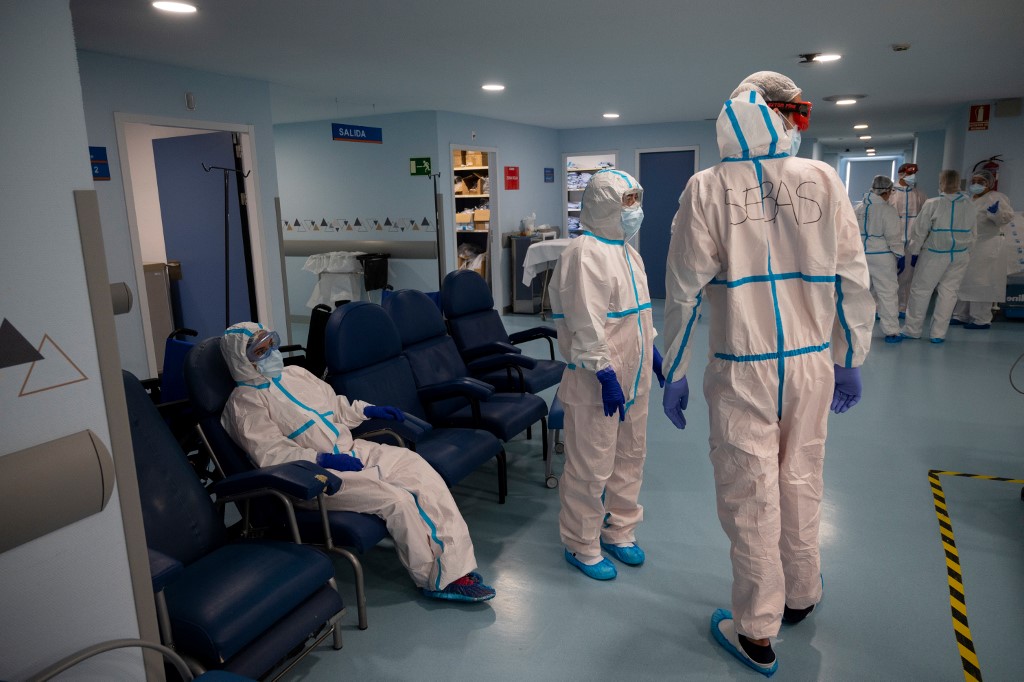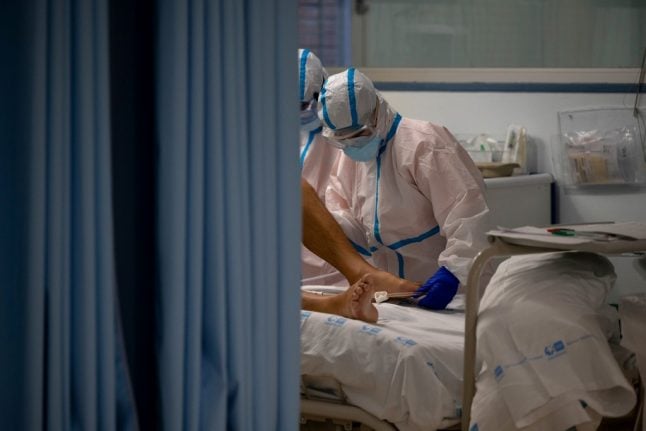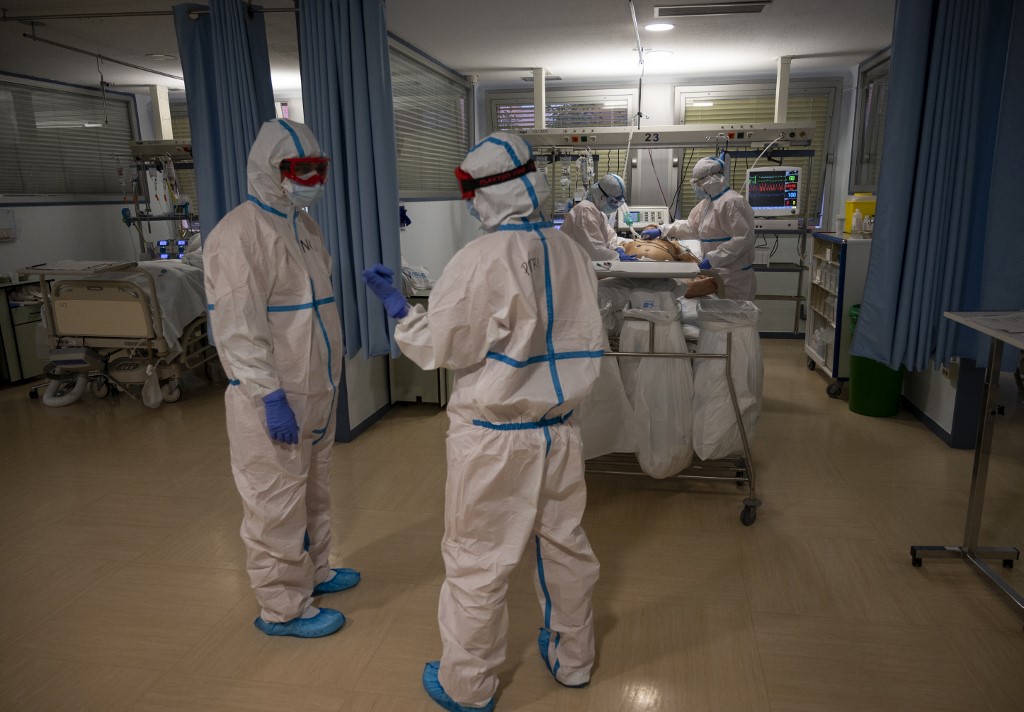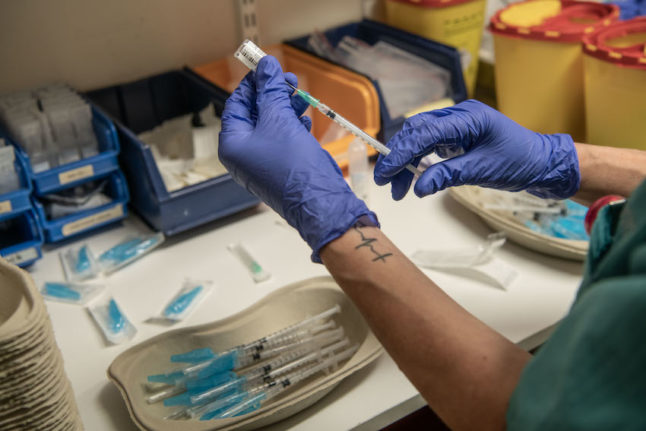“We're swamped,” admits Ricardo Diaz Abad, head of intensive care at this hospital in Leganes, south-west of Madrid, standing in front of the unit's 12 beds, all filled with gravely ill Covid-19 patients.
“Unfortunately we lost two patients” overnight, he tells AFP as nurses tend to the patients, who range in age from 54 to nearly 80, through a glass window.
Wearing white plastic suits, protective glasses, one or two masks, gloves and plastic shoe covers, the caregivers take turns to enter the unit.
Inside, the heavy silence is broken only by the hiss of the ventilator machines that help the patients breathe, their vitals monitored on a host of glowing computer screens.
Unlike the first wave when the hospital did not have enough beds for Covid patients, “we can now treat them because we have created space,” said Diaz Abad.
But staff fear once again being overwhelmed if infections continue to rise.
READ MORE: How reliable is the coronavirus data coming from Madrid?
'Even more tired'
When the pandemic hit in March, “the corridors were full of patients with oxygen bottles sitting on chairs,” said emergency doctor Luis Diaz Izquierdo, wearing a green gown and multicolour bandana, and with bags under his eyes.
“The first wave required a great physical and emotional effort… (now) we're even more tired because we haven't had time to completely recover.”
Madrid and the surrounding region has been the worst-hit area of Spain, where the virus has so far claimed nearly 34,000 lives.
At the height of the first wave in March, hospitals were swamped and officials turned a Madrid ice rink into a temporary morgue to cope with the surge in deaths.
Near the city's Barajas airport, an army of cranes is working round the clock to build a new hospital — expected to open in November — designed to deal with the pandemic.
To try and slow the spread of the virus, a partial lockdown was imposed in early October on the capital and several satellite towns like Leganes.
But many healthcare workers feel the restrictions are not enough to slow the surge of patient arrivals.
At the hospital entrance, posters call for protests, saying: “No more avoidable deaths”.
Sonia Carballeira, a 39-year-old nurse, said the “workload sometimes prevents us from making all the video calls that we would like” between patients and relatives who cannot visit in person.
'Learned little'

“We expected a second wave would occur but not so soon, since the flu season hasn't yet started,” she says at the entrance to the hospital's “Covid zone” where 48 patients are being treated.
Inside, 61-year-old patient Manuel Collazo Velasco still can't get over how the virus has altered his sense of taste.
“It has no sugar yet I find it very, very sweet,” he said while eating natural yoghurt.
In another room, Carmen Diaz Coello, a 72-year-old grandmother in a white-and-yellow dressing gown, is learning to walk again.
A standoff between the central government and Madrid's regional authorities over what virus restrictions to impose, and a more relaxed attitude among the general public has caused some unease at the hospital.
“On a scientific level, we have learnt a lot about how to treat patients… but I get the impression we've learnt very little within society,” sighs Diaz Izquierdo.
By AFP's Thomas Perroteau
READ ALSO:
- Q&A: What you can and can’t do under Madrid’s State of Emergency rules
- What's up doc? How Donkey therapy is easing Spain medics' stress




 Please whitelist us to continue reading.
Please whitelist us to continue reading.
Member comments